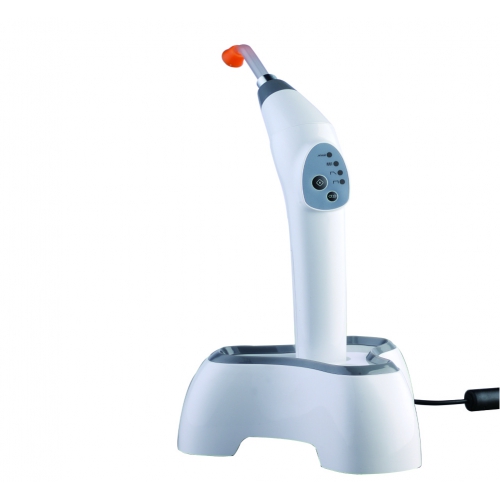UV Curing is defined as ‘a speed curing process in which high intensity ultraviolet light is used to create a photochemical reaction that instantly cures inks, adhesives, coatings and other materials’.
The use of a Liquid light guide, for example, is the most economical way of delivering high intensity UV light to materials. Light guides come in two, three or four pole configuration and filter mount assemblies are available to prolong their shelf life.

A radiometer is a useful tool to have in the UV Curing process since they allow operators to monitor and record the UV light curing process – for example a low UV intensity measurement would indicate to the user that part of the apparatus needs to be replaced. Radiometers also have the capability to confirm if the operator is sufficiently shielded from the UV light.
Conventional radiometers often allow a limited check of the light intensity of the curing device only. The reason for this are diverse technical limitations, such as the strictly defined diameter of the light measuring cell. As a rule, only approximate values are measured for each type of device (halogen, plasma, LED etc.). Owing to this fact, conventional radiometers can only be used for a relative light measurement or for checking the consistency of the light intensity.
Light polymerization is regarded as the no. 1 source of error when processing light-curing dental materials. Therefore, you should exercise extreme care in order to save time and not to jeopardize the success of the treatment.
We have compiled a quick guide for you to download. Here you will find essential tips on how to achieve optimum polymerization results.
Here are a few excerpts:
Check the light intensity of your dental curing light regularly and document the result.
Check and clean the curing light before use.
Observe the light curing times and material thickness information from the composite manufacturer.
Use a light guide which gives a uniform distribution of the light output across the light tip.
Position the light tip as closely as possible to the composite and secure it so that the curing light device does not slip.
Other accessories have been designed to offer protection from UV and visible light. Shields and stands offer protection from UV and visible light, whilst providing the user with clear visibility of the curing parts. Protective eye goggles are also recommended to provide additional protection from UV light exposure.